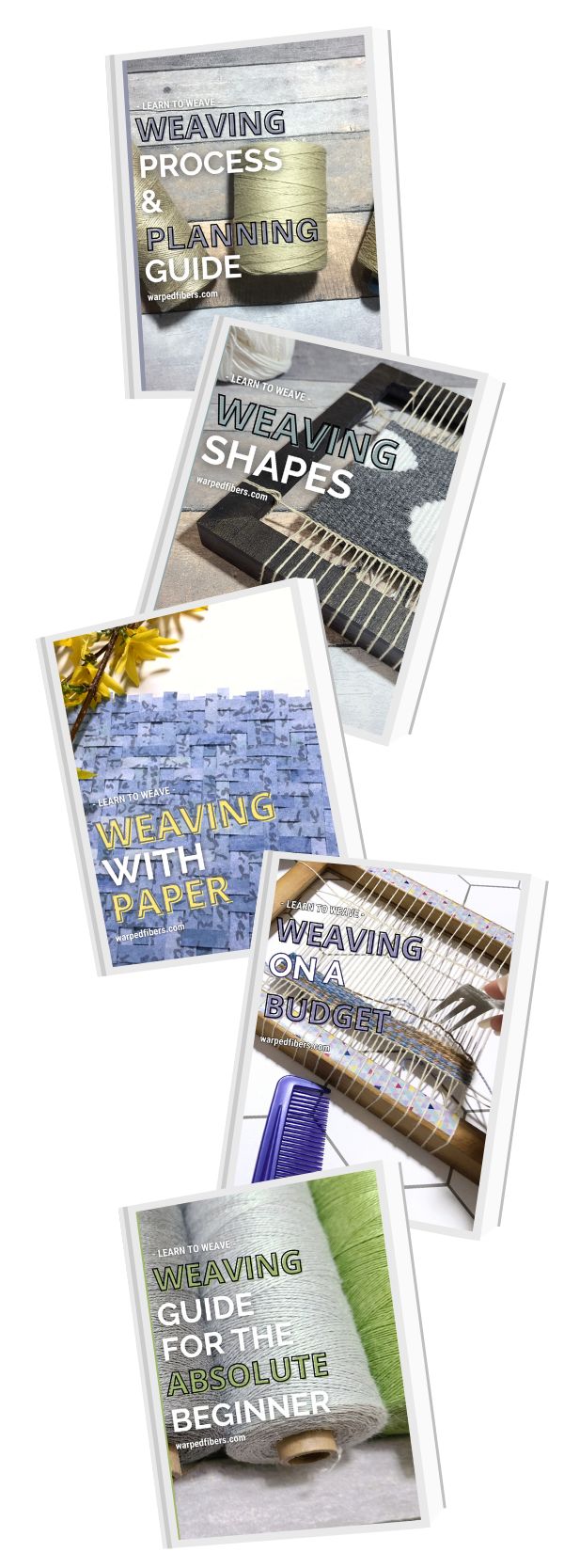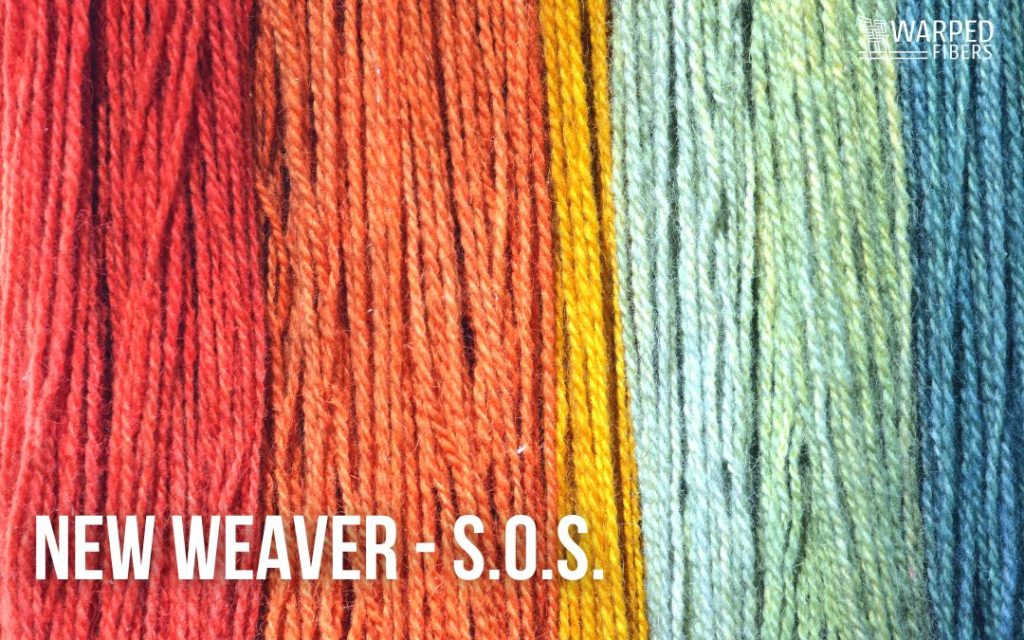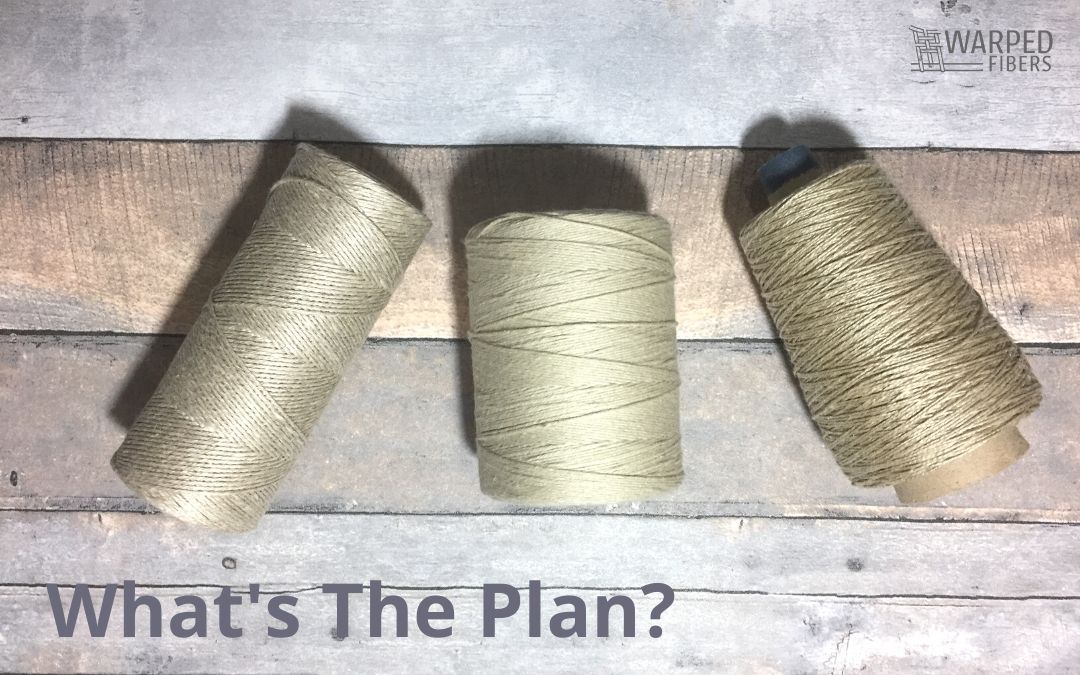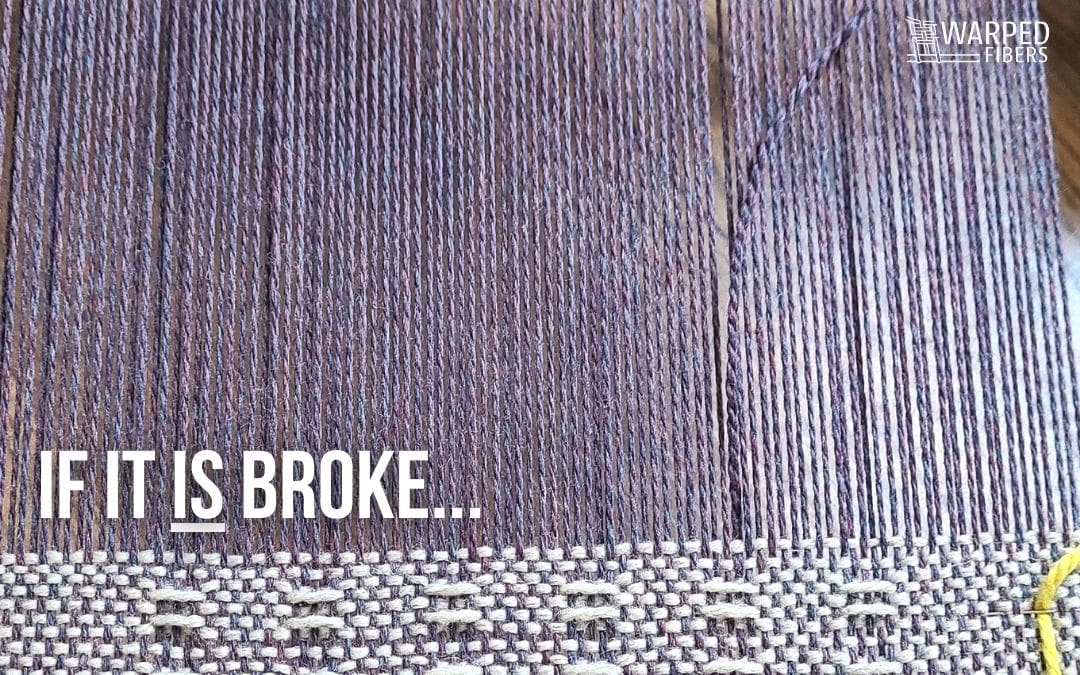Knowing what project to start with when you first start weaving can be a bit tricky. You want something that allows you to practice, but is not too difficult that it dissuades you from continuing with your weaving journey.
When it comes to weaving a tapestry, I like to recommend that you start out with a sampler. This allows you to try out the different techniques without committing to a full design or image.
I digress.
When it comes to weaving on a rigid heddle loom, on the other hand, there are different techniques that you will want to master.
That is why I start out my rigid heddle classes with a simple scarf that teaches the fundamentals, but still gets you an interesting scarf that you can wear or gift!
So, let’s talk about what you should look for in your first rigid heddle loom project and why I teach this project to beginners.
This page may contain affiliate links. If you purchase something through these links then I will receive a small commission – at no extra cost to you! Please read our DISCLAIMER for more info. Thanks for the support!
First project checklist
This project is not the be-all-end-all of beginner rigid heddle projects, just the one that I like to start with! I have been teaching this woven scarf project for a while and it seems to check all the boxes for what you would want in a first project.
You can take this pattern and change it up a bit to better suit your needs, just do not make it too complicated.
Project Length
While you can start with something shorter, having your first project be a long scarf has its definite benefits.
A longer warp makes it so you have more weaving to practice everything, but especially keeping your selvedges straight!
Since this is one of the most prominent issues that new weavers (and really all weavers) deal with, the more time to practice – the better.
If you want to learn how to weave straighter selvedges, then check out this post here.
Unless you are trying to save yarn, there really is no reason to start off with something shorter. It takes the same amount of time to warp a long warp that it does to warp a short one. You might as well get as much out of your time as you can and get some good weaving practice in.
That is why scarves are great first weaving projects. Scarf lengths usually start at around 5 feet and only get longer from there. Not only does weaving up a scarf for your first project give you a lot of practice, it also gets you a wearable piece of art that you made yourself!
If you do not want to weave a scarf, then you also have an option to weave multiple projects on the same warp if you are using a long warp. Again, this means you are saving time and yarn by only doing this once.
If you want to learn about weaving more than one project on the same warp – check out this post.
While you do want to practice warping your loom, subsequent warpings can always come with future weaving projects.
Warping different colors
Knowing how to warp with different colors is a really important skill to have when weaving on a rigid heddle loom. This skill sets you up for weaving many different plain weave patterns!
The best part is that once you know how to warp one color you know how to warp multiple colors.
So in theory, you could get away with only warping the one color, but there may be many different instances where you will need to start and stop your warp. (Broken yarn, knots, skipped dents)
Warping multiple colors will give you some more practice!
Plus, I find that the idea can be intimidating – so getting it over with at the very beginning can set you up for more complex patterns in the future.
This pattern gives you the chance to apply this skill at least once so you can have the confidence to change colors in the future.
Different color wefts
Beyond practice starting and stopping your weft yarns, having more than one weft yarn color in your scarf is a great way to understand what sides (if there is a correct side) to start and end your colors on.
For example, due to the specific pattern we are using in this pattern, it is important to only start and stop your weft yarns on the color that corresponds with the warp. This will allow you to weave in your tails when you are finished and blend them in completely.
With this specific pattern, you are changing out your weft colors every 6 inches. This is great for a beginner for 2 reasons:
1 – This means more practice for starting and stopping different weft yarns. By the end of the scarf you will have had enough practice that your weft-changing ability should stick with you as you keep weaving. If you do it just once or twice, you may have a hard time remembering your skills for your next weaving project.
2 – Stopping every 6 inches helps you to keep track of your weaving better and keep you from getting too lost in the meditative aspects of weaving. If you just weave up 1 color, then you may be more likely to get distracted from your weaving and start to pull in your selvedges or beat too hard.
Keeping your rigid heddle project simple, but not too simple
The simplest thing you could weave is one color weft on one color warp.
We have already talked about some reasons why that might not be your best option for your first rigid heddle project.
The last reason?
It could be boring!
Ok, maybe that is a bit harsh.
There are definitely ways that you could do that project that would make a beautiful woven scarf. For example using self-striping yarn, novelty yarns with different fibers or textures, or yarns that are hand-dyed and create interesting color movement across the scarf.
These are all great options. Just not options that I recommend for first-time weavers.
When working on your first project you will want to use yarn that is not finicky and can easily show you your mistakes (because everyone makes them!)
Weaving with just 1 color could make your first project feel a bit monotonous.
Weaving takes patience and time.
Learn more about what I wish I knew before I started weaving.
So until you are hooked, we need to make sure you keep weaving! This is why the color block scarf works really well. You only have 6 inches to get used to using 1 color before you have to switch it again.
There are now 2 ways to take it – either purchase the whole course at once for a discount or “create your own” course by purchasing just the parts you want! Either way, get 10% off for being a member of the Warped Community!
If you are interested in trying out this project then make sure to join the Warped Fibers community! You get access to this FREE pattern and other free weaving patterns, a beginner weaver ebook, and a mini-course on making a butterfly bobbin.
























